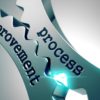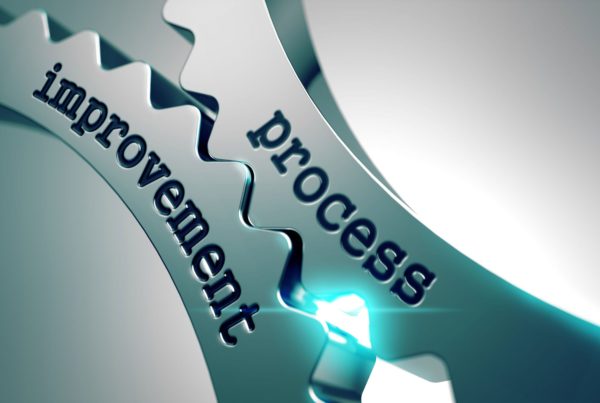Climate Change is arguably the 21st century’s most pressing challenge as businesses continue to hop on the bandwagon of addressing their carbon emissions, knowing environmental action is a critical issue for stakeholders and consumers. Research indicates that focusing on environmental and social welfare in the communities in which you operate improves your business’ bottom line(s).
The way to develop a carbon emission reduction strategy for your business mirrors the way you would conduct a business process review. In fact, your climate change strategy is business process improvement.
When conducting process improvement projects, Propel Solutions operates in three phases: we conduct an “as-is” analysis, we develop recommendations, and then we implement them.
Reducing your carbon emissions is the same. Andrew J. Hoffman is the Holcim, (US) Professor of Sustainable Enterprise at the University of Michigan, is the brain behind the ‘8 steps to building a corporate climate change strategy.’[1] Similar to Propel’s trusted business improvement methodology, Dr. Hoffman’s eight steps move the organization through from an assessment to implementation. The steps are presented below:
Phase One: As-Is Analysis
In this phase, Propel enters a business and determines the current processes by conducting interviews, mapping processes, and facilitating cross-group critiques, among other things. The first two steps in Dr. Hoffman’s strategy align with this phase of Propel’s process improvement methodology.
- Step One: Conduct your Emissions Profile Assessment
This is done by defining your organizational and operational boundaries, and understanding (and quantifying) your main emissions from primary value chain activities. As with all business process improvement projects, conducting this “as-is” analysis is the most intensive part of the process even while it generates the most rewards. - Step Two: Gauge Risks and Opportunities including macro-environmental trends and industry trends. This includes developing an understanding of the politics in your area of operations, including any regulations coming into force, consumer trends, the possibility of natural events/disasters that may affect your operations; and the factors that may increase or reduce industry competition.
Phase Two: Develop Recommendations
In this phase Propel would begin to develop options along with management. We would also ensure the options were validated by management and executives in the relevant areas so there are no surprises. Our change management strategy would begin in earnest here as management and executives take a leading role in developing process improvements. Propel would also secure a change sponsor at this point, an executive within the business who agrees to take ownership of the change, to facilitate 100% adoption of the change.
- Step Three: Evaluate Options for improvements under your main sources of emissions. These could include tackling Quick Win energy efficiency improvements (LED lightbulbs; sensors etc.), or higher abatement potential items like reducing fuel costs in transport (we call these Longer-Term Solutions).
- Step Four: Set Goals and Targets to reduce your emissions. This could include taking immediate advantage of the Quick Wins and meeting, or exceeding, any regulatory requirements.
- Step Five: Develop Financial Mechanisms to support the goals and targets. This could include carbon offsetting or trading establishing a pool of investment capital to help achieve the goals.
Phase Three: Implementation
In this phase, Propel would create implementation schedules, develop a change management roadmap, and assist the business with rolling out the changes.
- Step Six: Engage the Organization. This step is crucial to your strategy’s success: facilitate employee adoption of the relevant changes by utilizing Change Management principles.
- Step Seven: Formulate a Policy Strategy. This step ensures your business is up to speed on any policy and/or legislation changes that may affect your strategy.
- Step Eight: Manage External Relations. This is where you communicate the implementation of your plan to your stakeholders, and decide whether you want to create external governmental relationships. This last step is an excellent opportunity for you to publicize your strategy.
[1] Hoffman, Andrew J. (2006). “Getting Ahead of the Curve: Corporate Strategies that Address Climate Change.” The University of Michigan.
[contact-form-7 404 "Not Found"]Climate Change: arguably the 21st century’s most pressing challenge. Businesses are continuing to hop on the bandwagon of addressing their carbon emissions; knowing environmental action is a critical issue for stakeholders and consumers. And, research indicates focusing on environmental and social welfare in the communities in which you operate improves your business’ bottom line(s).
The way to develop a carbon emission reduction strategy for your business mirrors the way you would conduct a business process review. In fact; your climate change strategy is business process improvement.
When conducting process improvement projects, Propel Solutions operates in three phases: We conduct an “as-is” analysis; we develop recommendations; and then we implement them.
Reducing your carbon emissions is the same. Andrew J. Hoffman is the Holcim (US) Professor of Sustainable Enterprise at the University of Michigan and he is the brain behind the 8 steps to building a corporate climate change strategy.[1]
Similar to Propel’s trusted business improvement methodology, Dr. Hoffman’s eight steps move the organization through from assessment to implementation. The steps are presented below:
Phase One: As-Is Analysis
In this phase, Propel enters a business and determines current processes by, among other things, conducting interviews, mapping processes, and facilitating cross-group critiques. The first two steps in Dr. Hoffman’s strategy align with this phase of Propel’s process improvement methodology.
- Step One: Conduct your Emissions Profile Assessment by defining your organizational and operational boundaries, and understanding (and quantifying) your main emissions from primary value chain activities. As with all business process improvement projects, conducting this “as-is” analysis is the most intensive part of the process even while it generates the most rewards.
- Step Two: Gauge Risks and Opportunities including macro-environmental trends and industry trends. This includes developing an understanding of the politics in your area of operations, including any regulations coming into force, consumer trends, the possibility of natural events/disasters that may affect your operations; and the factors that may increase or reduce industry competition.
Phase Two: Develop Recommendations
In this phase, Propel would begin to develop options along with management. We would ensure the options were validated by management and executives in the relevant areas, so there are no surprises. Our change management strategy would begin in earnest here; as management and executives take a leading role in developing process improvements. Propel would also secure a change sponsor at this point; (an executive within the business who agrees to take ownership of the change) to facilitate 100% adoption of the change.
- Step Three: Evaluate Options for improvements under your main sources of emissions. These could include tackling Quick Win energy efficiency improvements (LED lightbulbs; sensors etc.); or higher abatement potential items like reducing fuel costs in transport (we call these Longer-Term Solutions).
- Step Four: Set Goals and Targets to reduce your emissions. This could include taking immediate advantage of the Quick Wins and meeting (or exceeding) any regulatory requirements.
- Step Five: Develop Financial Mechanisms to support the goals and targets. This could include carbon offsetting or trading establishing a pool of investment capital to help achieve the goals.
Phase Three: Implementation
In this phase, Propel would create implementation schedules, develop a change management roadmap, and assist the business with rolling out the changes.
- Step Six: Engage the Organization. This step is crucial to your strategy’s success: facilitate employee adoption of the relevant changes by utilizing Change Management principles.
- Step Seven: Formulate a Policy Strategy. This step ensures your business is up to speed on any policy and/or legislation changes that may affect your strategy.
- Step Eight: Manage External Relations. This is where you communicate the implementation of your plan to your stakeholders, and decide whether you want to create external governmental relationships. This last step is an excellent opportunity for you to publicize your strategy.
[1] Hoffman, Andrew J. (2006). “Getting Ahead of the Curve: Corporate Strategies that Address Climate Change.” The University of Michigan.
[contact-form-7 404 "Not Found"]Climate Change: arguably the 21st century’s most pressing challenge. Businesses are continuing to hop on the bandwagon of addressing their carbon emissions; knowing environmental action is a critical issue for stakeholders and consumers. And, research indicates focusing on environmental and social welfare in the communities in which you operate improves your business’ bottom line(s).
The way to develop a carbon emission reduction strategy for your business mirrors the way you would conduct a business process review. In fact; your climate change strategy is business process improvement.
When conducting process improvement projects, Propel Solutions operates in three phases: We conduct an “as-is” analysis; we develop recommendations; and then we implement them.
Reducing your carbon emissions is the same. Andrew J. Hoffman is the Holcim (US) Professor of Sustainable Enterprise at the University of Michigan and he is the brain behind the 8 steps to building a corporate climate change strategy.[1]
Similar to Propel’s trusted business improvement methodology, Dr. Hoffman’s eight steps move the organization through from assessment to implementation. The steps are presented below:
Phase One: As-Is Analysis
In this phase, Propel enters a business and determines current processes by, among other things, conducting interviews, mapping processes, and facilitating cross-group critiques. The first two steps in Dr. Hoffman’s strategy align with this phase of Propel’s process improvement methodology.
- Step One: Conduct your Emissions Profile Assessment by defining your organizational and operational boundaries, and understanding (and quantifying) your main emissions from primary value chain activities. As with all business process improvement projects, conducting this “as-is” analysis is the most intensive part of the process even while it generates the most rewards.
- Step Two: Gauge Risks and Opportunities including macro-environmental trends and industry trends. This includes developing an understanding of the politics in your area of operations, including any regulations coming into force, consumer trends, the possibility of natural events/disasters that may affect your operations; and the factors that may increase or reduce industry competition.
Phase Two: Develop Recommendations
In this phase, Propel would begin to develop options along with management. We would ensure the options were validated by management and executives in the relevant areas, so there are no surprises. Our change management strategy would begin in earnest here; as management and executives take a leading role in developing process improvements. Propel would also secure a change sponsor at this point; (an executive within the business who agrees to take ownership of the change) to facilitate 100% adoption of the change.
- Step Three: Evaluate Options for improvements under your main sources of emissions. These could include tackling Quick Win energy efficiency improvements (LED lightbulbs; sensors etc.); or higher abatement potential items like reducing fuel costs in transport (we call these Longer-Term Solutions).
- Step Four: Set Goals and Targets to reduce your emissions. This could include taking immediate advantage of the Quick Wins and meeting (or exceeding) any regulatory requirements.
- Step Five: Develop Financial Mechanisms to support the goals and targets. This could include carbon offsetting or trading establishing a pool of investment capital to help achieve the goals.
Phase Three: Implementation
In this phase, Propel would create implementation schedules, develop a change management roadmap, and assist the business with rolling out the changes.
- Step Six: Engage the Organization. This step is crucial to your strategy’s success: facilitate employee adoption of the relevant changes by utilizing Change Management principles.
- Step Seven: Formulate a Policy Strategy. This step ensures your business is up to speed on any policy and/or legislation changes that may affect your strategy.
- Step Eight: Manage External Relations. This is where you communicate the implementation of your plan to your stakeholders, and decide whether you want to create external governmental relationships. This last step is an excellent opportunity for you to publicize your strategy.
[1] Hoffman, Andrew J. (2006). “Getting Ahead of the Curve: Corporate Strategies that Address Climate Change.” The University of Michigan.
[contact-form-7 404 "Not Found"]







